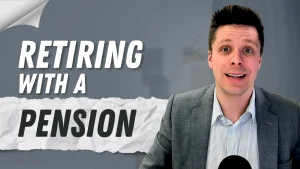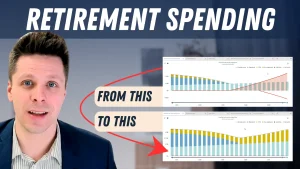[vc_row css=”.vc_custom_1612380408194{padding-top: 20px !important;padding-bottom: 20px !important;}”][vc_column][vc_video link=”https://youtu.be/xy9fm8LabQU” css=”.vc_custom_1695257135755{padding-top: 20px !important;padding-bottom: 20px !important;}”][vc_column_text css=”.vc_custom_1695257153050{padding-top: 20px !important;padding-bottom: 20px !important;}”]You’re 60 and you and your spouse have saved up $1 Million for retirement. How much are you going to be able to spend monthly in retirement?
This is the exact question we got asked last week. Today we are going to go over an example very similar to theirs and show how much they will be able to spend. We will cover the different strategies we reviewed and explain why it makes sense in this situation.[/vc_column_text][/vc_column][/vc_row]





